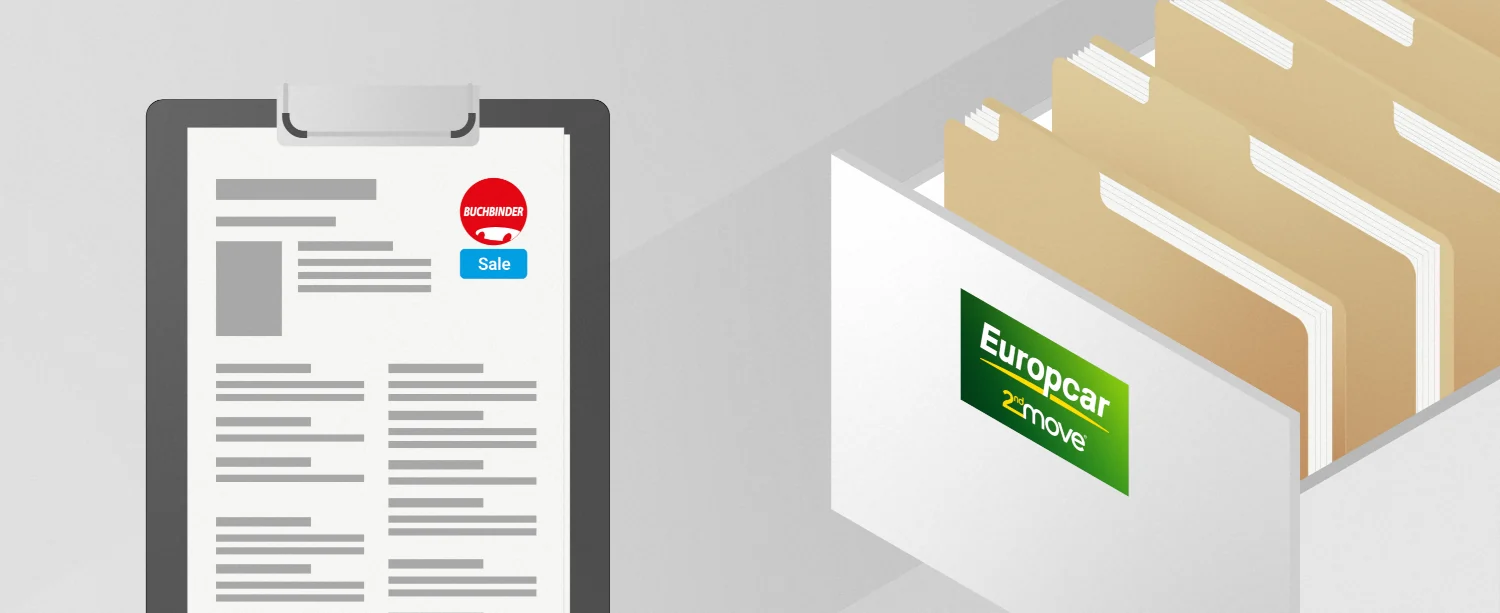When it comes to assessing a vehicle, there are two main methods: on the one hand, a personal inspection, and on the other hand, checking the information and photos provided online. When inspecting the vehicle in person, which is common, for example, with vehicles that have been offered for sale on online marketplaces by private individuals or other dealers or are being traded in, it is always advisable to check the papers thoroughly first.
Workshop invoices, HU reports, checkbook should be complete.
If they are missing in whole or in part, this indicates careless maintenance or even the deliberate suppression of defects. Also if the odometer has been manipulated, such documents can often no longer be "found" by the person selling the car.
In order to uncover odometer manipulations, especially in older vehicles, a look at the accelerator pedal, driver's seat or steering wheel sometimes helps. If these are worn out, although the car is said to have only driven 100,000 kilometers so far, something may not be right. Even if nothing is conspicuous here, you should also look specifically for oil change slips or old dealer and workshop stickers. A call to earlier "stations" in the life of the vehicle often brings important insights.
In many cases, maintenance backlogs and defects can be identified by looking into the engine compartment, under the vehicle and at the tires. Are hoses porous or even brittle? Are the oil and water levels correct? How old are the tires? Is the tire tread worn evenly? The latter indicates defective wheel bearings, shock absorbers or axle suspension. The next things on the check list are the search for rust and paint damage, body leaks and accident damage. Minor rust and paint damage are easy to spot with good lighting and dry, clean paint.
Check smell, gaps and paint
However, the non-obvious defects are usually more serious: For example, if a car smells musty on the inside or if the floor is damp, major rust damage is likely. Even slightly uneven gap dimensions on the doors, fenders and tailgate can indicate accident damage, as can minimal differences in the paint color, color runs and different degrees of gloss. A magnet helps to uncover improperly filled areas. And with the help of special paint layer measuring devices, which determine the thickness of a paint finish, it is usually possible to find repaired damage that would otherwise go unnoticed.
Experienced used car salespeople also always do a test drive. The engine must start easily when cold, must not run rough or react poorly to gas commands. When the steering is fully turned, no cracking noises should be heard. They indicate faulty drive shafts or wheel bearings. Furthermore, professionals pay attention to whether the vehicle stays on track when driving and braking, whether the transmission makes no noise when shifting gears, and whether the shifting is smooth and precise in general. Other shortcomings are poor braking performance or rims that are so hot after the test drive that they can hardly be touched. It is important to reach higher speeds during the test drive and to look under the hood again for leaks after the end.
Only when all of these aspects have been taken into account can a trader really assess whether and at what price a purchase is worthwhile for him. He must therefore be willing to invest a great deal of time – not only in precisely inspecting the vehicle on site, but also in the journey there and back again. And in the end, the person still cannot be sure that all damage has been discovered - especially if they still lack experience.
Less time, more risk? There's another way
The time-saving alternative to evaluating a vehicle on site is the assessment already mentioned at the beginning using only information and photos provided online. However, it is clear that this form of selling offers a higher risk potential than viewing - especially with unknown sources. However, even on well-known B2B channels of established providers, it can happen that defects or even accidental damage to a vehicle are not described and illustrated because the employees lack information, are not experts or simply do not make enough effort to track down all the damage and document it properly.
Anyone who wants to go this route should therefore look for a sales channel that offers vehicles from a reputable source and at the same time guarantees maximum security. This combination is given on the buchbinder-sale.de portal. Here, returns from the joint rental vehicle fleet of Europcar and Buchbinder are traded in direct sales or by auction. Before they are resold, all vehicles on offer undergo a strict inspection process by experts who, with their experience and technical tools, record any damage that goes beyond the "trace of use" status in writing and in meaningful photos. Interested professionals can call up this data and images online and already assess the condition of the vehicle very well from a distance.
 To register, you will be redirected to the Europcar 2ndMove website. After registering, you can log in to Buchbinder-Sale.de.
Next
To register, you will be redirected to the Europcar 2ndMove website. After registering, you can log in to Buchbinder-Sale.de.
Next
 To register, you will be redirected to the Europcar 2ndMove website. After registering, you can log in to Buchbinder-Sale.de.
Next
To register, you will be redirected to the Europcar 2ndMove website. After registering, you can log in to Buchbinder-Sale.de.
Next






 Registration
Registration  Login
Login All vehicles
All vehicles  Direct Sale
Direct Sale
 Auctions
Auctions
 Service
Service
 Company
Company
 My Area
My Area 
